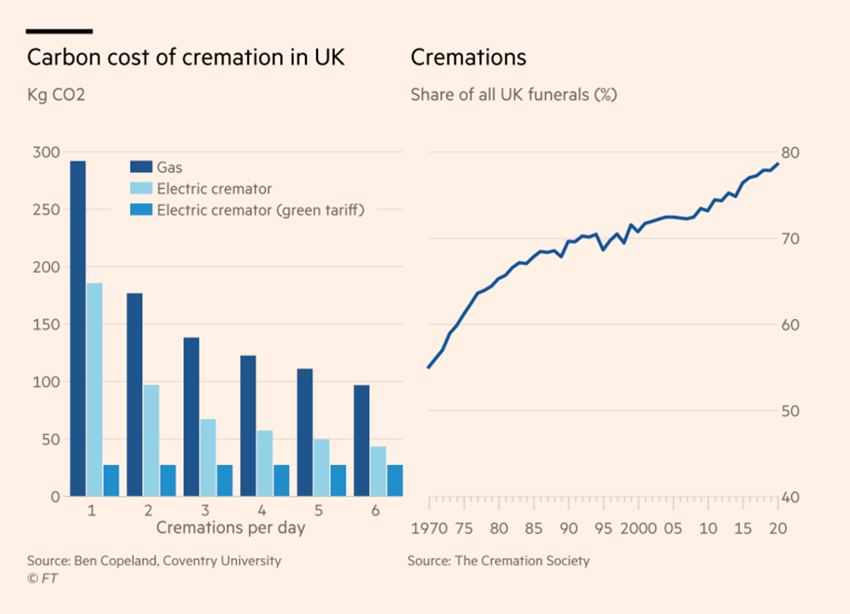“Some people find the topic of burial versus cremation an uncomfortable reminder of mortality. For others, the choice is dictated by deeply held beliefs and preferences. A third group will consider their environmental legacy pragmatically as they put their affairs in order in later life.
Burial is central to green funerals, which have been growing in popularity in the US and Europe. But cremations remain the predominant way of dealing with human remains in the US, UK, Japan and some European countries. Usually fueled by natural gas, they produce significant emissions.”

According to the report a cremation releases 150kg of CO2 and greatly exceeds the carbon footprint of burial where we literally bury the CO2 along with you.[1] But take some solace, that carbon cost is less than a transatlantic flight
[1] The largest footprint from a burial is the polished granite headstone.
Source: Carbon counter: cremation versus burial Financial Times




